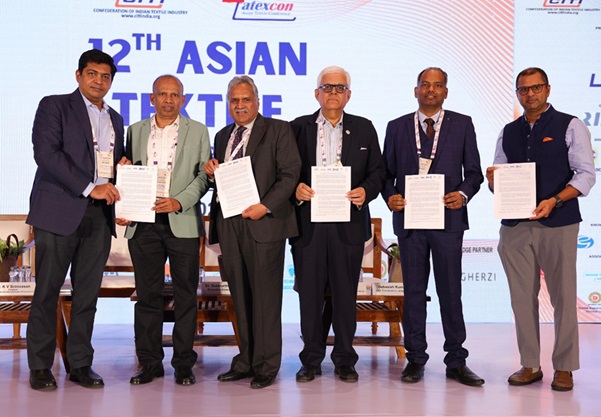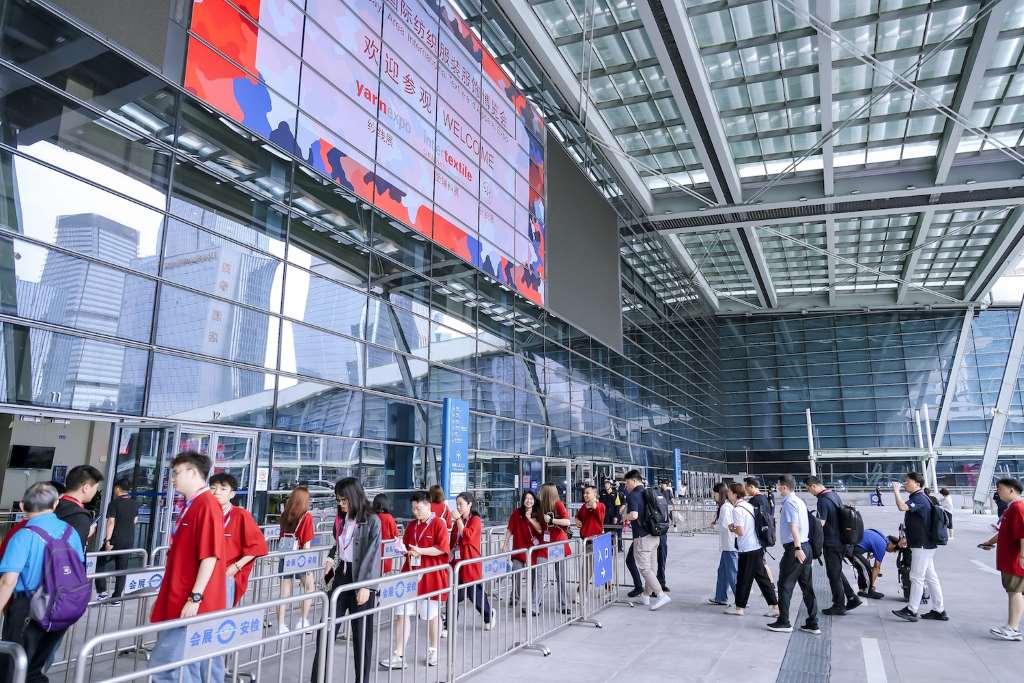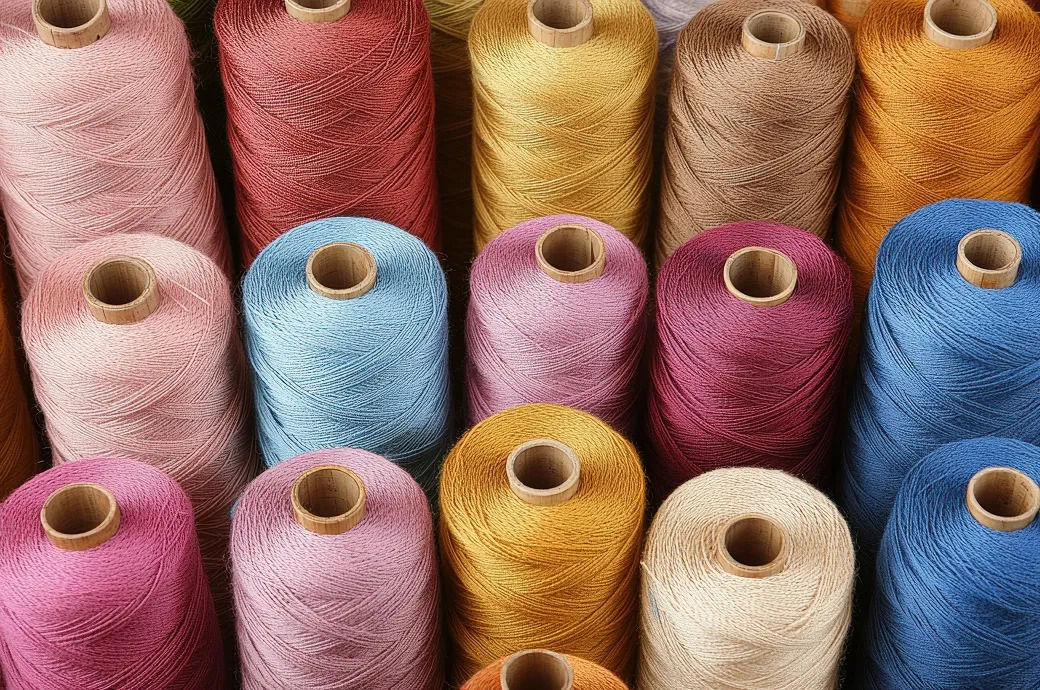FW
North Eastern Handicrafts and Handlooms Development Corporation (NEHHDC), has obtained the Oeko-Tex certification from Germany for eri silk under the leadership of the Ministry of Development of North Eastern Region.
Oeko-Tex is a globally recognized certification that ensures textiles, including raw and finished materials, are free from harmful substances and safe for human use. This certification enhances eri silk’s marketability in the global textile industry, ensuring compliance with international safety and quality standards. It strengthens consumer confidence, supports eco-friendly initiatives, and boosts the global acceptance of Indian eri silk in high-end markets.
This eri silk certification ensures the fiber meets global textile safety standards. It boosts consumer confidence by guaranteeing chemical-free, eco-friendly production. It also enhances global marketability and aligns with sustainability trends, attracting ethical and environmentally conscious buyers.
The government has established Central Muga & Eri Research Institute (Lahdoigarh, Assam) for R&D, training, and extension of support to eri silk. These R&D efforts focus on modernization, improved production techniques, and technological upgrades.
The government has also established the Muga Eri Silkworm Seed Organization for the production and supply of quality eri silkworm seeds besides implementing the Silk Samagra-2 Scheme (2021-26) for the overall development of India’s sericulture industry, including eri silk.
The eri silk sector is currently largely unorganized with traditional methods still being widely used. The sector needs to be modernized to improve production efficiency and productivity. The sector suffers from a limited awareness among stakeholders about global certification requirements.

The 12th edition of the Asian Textile Conference (ATEXCON 2025), organized by the Confederation of Indian Textile Industry (CITI), successfully concluded today at the Courtyard by Marriott, Mumbai. Gherzi, a leading global textile consulting firm, served as the official knowledge partner for the event, which brought together industry leaders, policymakers, and experts to explore Asia’s growing influence in the global textile sector.
Asia’s dominance in textile manufacturing
Asia remains the backbone of the global textile and apparel sector, playing a crucial role across the value chain. The region contributes approximately 63 per cent of the world’s total cotton production and an overwhelming 90 per cent of global man-made fiber (MMF) production, positioning it as the largest supplier of raw materials. Additionally, with around 90 per cent of the world’s total spinning capacity and 85 per cent of global knitting capacity, Asia continues to be the world's leading textile manufacturing base.
ATEXCON 2025 emphasized the need for Asian economies to enhance value addition and increase unit value realization (UVR) in exports. In his welcome address, Rakesh Mehra, Chairman of CITI, stressed that while boosting export volumes is essential, the focus should also be on manufacturing high-value products. “Exporting high-value products with greater UVR should be a priority for all Asian countries,” he stated, underlining the significance of strategic growth to maintain competitiveness in global markets.
Strategic industry initiatives and policy discussions
The conference witnessed the release of two key documents aimed at shaping the future of India’s textile and apparel (T&A) sector. The ‘5-Point Agenda for the Indian T&A Industry (2025-26)’ outlines crucial policy interventions required to achieve India’s export target for 2025-26 and drive the industry towards $100 billion in exports by 2030. Another major announcement was the ‘Code of Conduct for Prevention of Child Labour and Forced Labour in the Indian Textile Industry,’ a voluntary commitment endorsed by AEPC, CITI, Indian Technical Textile Association (ITTA), SIMA, TEA, CMAI, MATEXCIL, PDEXCIL, and TEXPROCIL to ensure ethical practices across the textile value chain.
Key sessions at ATEXCON 2025 addressed pressing industry challenges and future opportunities. The theme session, ‘Asia Steering Global Growth,’ highlighted the region’s strategic position in global textile markets and the necessity for collaborative growth. Other discussions focused on trade dynamics, policy shifts, and technological disruptions. David Uricoli, Partner at Gherzi USA, moderated a session on evolving trade policies and geopolitical shifts, while Siddharth Rajagopal, Executive Director of TEXPROCIL, led discussions on enhancing Asia’s global competitiveness.
Another significant session, moderated by Suryadeb Mukherjee of Gherzi Consulting, explored the transformative impact of AI, automation, and digital tools on textile manufacturing and sustainability. S K Sundararaman, Chairman of SIMA, examined growth opportunities in technical textiles, including medical, automotive, and geotextiles. Rahul Mehta, Chief Mentor at the Clothing Manufacturers Association of India (CMAI), moderated a discussion on shifting consumer preferences, circular fashion, and the future of fashion trends.
Key takeaways and future roadmap
The conference underscored Asia’s role as the global hub for textile production and innovation, with an increasing emphasis on sustainability, digitization, and policy alignment. As businesses navigate a rapidly evolving landscape, insights from ATEXCON 2025 are expected to guide the industry toward a more resilient and future-ready approach.
The event concluded with a valedictory session that summarized key takeaways and laid the groundwork for future collaborations, ensuring that Asia continues to drive global textile growth through innovation, sustainability, and strategic partnerships.
Set for substantial expansion, the ASEAN alpaca fiber market is projected to grow at a compound annual growth rate (CAGR) of 6.2 per cent from 2025 to 2035 to reach a valuation of $320.4 million by 2035.
This growth will be fueled a rising demand for sustainable, high-quality natural fibers in the textile and fashion sectors. Known for its softness, durability, and excellent thermal insulation, alpaca wool is driving its use in luxury apparel, home textiles, and accessories.
As sustainable fashion trends gain momentum and fiber processing technologies advance,
ASEAN nations are becoming significant players in the global alpaca fiber industry. The worldwide shift towards ethical and environmentally friendly fashion is boosting demand for alpaca fiber. Its hypoallergenic, lightweight nature, coupled with superior thermal properties, makes it highly desirable.
With their robust textile manufacturing infrastructure, ASEAN countries are leveraging their capabilities to process and produce alpaca fiber. The ASEAN alpaca fiber market features a blend of domestic and international companies, all competing to capture a growing consumer base.
Government policies supporting eco-friendly industries and sustainable agriculture are further encouraging the adoption of alpaca fiber in the region. Innovations in fiber sorting, grading, and blending techniques are improving the quality and efficiency of alpaca fiber production.
Zyod, a leading tech-enabled B2B apparel manufacturing company, has appointed Ankit Shukla as Vice President of Business. With over 20 years of industry experience, he will lead Zyod’s global expansion, drive innovation, and enhance operational efficiency through AI and automation.
In his new role, Ankit will focus on strategic market expansion, revenue growth, and supply chain optimization. His expertise in business transformation and technology-driven solutions will strengthen Zyod’s position in agile fashion manufacturing.
Expressing his vision, Ankit Shukla said, “I am excited to join Zyod and contribute to its mission of innovation and disruption in fashion. My goal is to enhance speed, scalability, and sustainability in fashion sourcing while leveraging AI and automation to meet evolving market demands.”
Ankit Jaipuria, Co-Founder of Zyod, welcomed the appointment, stating, “Ankit’s strategic acumen in apparel manufacturing will be invaluable. His leadership will help expand our global presence, strengthen industry alliances, and reinforce Zyod’s position as a market leader.”
Before joining Zyod, Ankit held leadership roles at PDS Limited and Concord Ventures Group, where he spearheaded multi-million-dollar business expansions, built global partnerships, and optimized supply chain operations. His extensive experience in market dynamics and business strategy will play a crucial role in Zyod’s growth journey.
With this appointment, Zyod aims to accelerate its innovation-driven approach and solidify its presence in the global fashion manufacturing landscape.

After attracting nearly 20,000 visitors from 45 countries and regions last year, Yarn Expo Shenzhen is set to return from 11 to 13 June 2025 at the Shenzhen Convention and Exhibition Center (Futian). The event will once again reinforce South China’s position as a key hub for textile innovation, supported by the region’s strong infrastructure, expanded visa-free policies, and thriving apparel industry. Held alongside Intertextile Shenzhen and two other apparel shows, the expo will foster industry collaboration and showcase a wide range of in-demand yarns, fibres, and sustainable innovations.
A growing market and expanded global access
The global yarn, fibre, and thread market is projected to reach $138.7 billion by 2029, growing at a CAGR of 6.4 per cent, with Asia-Pacific holding the largest share. China’s expansion of its visa-free policy, now covering 18 additional countries with extended 30-day stays further facilitates international business opportunities. Positioned strategically in the Greater Bay Area (GBA), Yarn Expo Shenzhen serves as a major international sourcing platform, bridging the gap between domestic and global textile markets.
Highlighting the event’s significance, Wilmet Shea, General Manager of Messe Frankfurt (HK) Ltd, stated, “Held in mid-summer between the Shanghai editions, Yarn Expo Shenzhen fosters a comprehensive industry dialogue in the vibrant South China region. Its strategic positioning continues to drive advancements in sustainable practices and global collaboration.” With an efficient supply chain and strong textile production base, the GBA offers promising prospects for continued business expansion and innovation.
Showcasing innovation across key textile sectors
Yarn Expo Shenzhen 2025 will feature seven specialized zones, including the Cashmere Yarn Zone, the Chemical Fibre Zone, the Cotton Yarn Zone, the Fancy Yarn Zone, the Linen Yarn Zone, the Wool Yarn Zone, and the International Yarn Zone. Reflecting evolving industry trends, the fair will also highlight eco-friendly solutions through its New Green Fibre Materials display and fringe events focused on sustainability and innovation.
Past exhibitors have noted the expo’s effectiveness in facilitating business growth. Mohsin Ghoniya from Global Tex, India, shared his positive experience: “Shenzhen has a vibrant knitting market, and our 20 carded knitting yarn is in high demand. The fair has helped us secure numerous orders from sweater manufacturers.” Similarly, Xie Yongxian, Sales Manager of Foshan Anxin Fiber Technology Co Ltd, emphasized the rising demand for high-performance and eco-friendly fibres, stating, “Breakthroughs in textile development depend on raw material innovation, and this fair is an excellent platform to track industry progress.”
A comprehensive platform for the textile industry
The 2025 edition of Yarn Expo Shenzhen will be held alongside Intertextile Shenzhen Apparel Fabrics, BIRD Fashion Fair, and PH Value, creating a comprehensive trade platform for the entire textile value chain. Organised by Messe Frankfurt (HK) Ltd, the Sub-Council of Textile Industry, CCPIT, China Cotton Textile Association, and China Chemical Fibers Association, the event aims to strengthen industry connections and inspire future advancements in textile manufacturing.
Launched by ABFRL, the modern Indian man's wedding wear brand, Tasva has unveiled its flagship store in Pune in collaboration with renowned couturier Tarun Tahiliani.
Spanning 2,400 sq ft, the new store underscores Tasva's dedication to delivering luxury and elegance through meticulously crafted garments and a unique shopping experience.
Designed to offer an immersive experience, the store resonates with the evolving tastes of India's cosmopolitan men. It blends heritage-inspired aesthetics with contemporary sophistication, reflecting Tasva's vision of redefining modern Indian menswear.
Showcasing Tasva's festive collection, the store features stunning kurta sets and bundis, with vibrant screen prints and modern silhouettes adding a fresh twist to traditional attire. The wedding collection offers luxurious sherwanis, achkans, Indo-Western outfits, and bandhgalas, crafted from opulent fabrics and detailed with intricate embroidery.
Ashish Mukul, Brand Head, Tasva says, every detail, from the store design to the layout, has been meticulously curated to create a smooth and immersive shopping journey, offering clients a unique Tasva experience. With highly trained stylists providing personalized advice and assistance, the Pune store ensures an unmatched retail experience.
Tarun Tahiliani, Creative Director, Tasva shares, the brand reimagines Indian menswear with a superior fit that rivals the precision of Western tailoring, seamlessly infused into traditional attire. Every garment designed by the brand is meticulously crafted to provide a sharp, refined silhouette while ensuring effortless movement and comfort.
With a growing presence in major cities across India, Tasva continues to set new standards in premium ethnic menswear, offering garments that celebrate tradition, craftsmanship, and modern sophistication.
To be held in Phnom Penh from March 31-April 1, 2024 by the Textile, Apparel, Footwear, and Travel Goods Association in Cambodia (TAFTAC), the ‘Cambodia Global Textile Summit 2025’ will help catalyze sustainable innovation and policy development within Cambodia’s burgeoning textile sector.
To be organized under the theme ‘Shaping the Future: Competitiveness and Sustainability,’ the two-day event, at Sofitel Phnom Penh Phokeethra, will be presided over by prominent Cambodian officials, including Sun Chanthol, Deputy Prime Minister and Heng Sour, Minister of Labor and Vocational Training. The summit will provide a platform for networking, access to crucial industry data, and insights into sector forecasts and governmental policies.
Primary focus of the summit will be on strengthening collaboration between industry and civil society, fostering partnerships that support due diligence across the supply chain, and ensuring responsible manufacturing practices within Cambodia. The summit will convene government leaders, international brands, industry stakeholders, employers, and organizations to drive advancements in sustainability, innovation, and policy development.
Furthermore, the summit will address Cambodia's transition from Least Developed Country (LDC) status, highlighting the government’s strategic approach and its potential industry impact. Sustainability will be a central theme, with discussions covering responsible sourcing, compliance with emerging regulations, and best production practices.
Ultimately, the summit aims to foster multi-stakeholder collaboration, connecting government, industry, and civil society to ensure the apparel sector's competitiveness, sustainability, and inclusivity. The Cambodia Global Textile Summit 2025 is co-organized by TAFTAC, Better Factories Cambodia (BFC), GIZ, EuroCham Cambodia, and the Skills Development Fund (SDF).
Sportswear giant Puma has joined forces with RE&UP Recycling Technologies to advance a fully circular textile solution, transforming waste into Next-Gen Recycled Cotton Fibers and Recycled Polyester Chips. This collaboration aligns with Puma’s Vision 2030 sustainability goals, reinforcing its commitment to textile-to-textile recycling.
PUMA has already expanded its Re:Fibre program, producing millions of football jerseys with an increasing share of recycled textiles. RE&UP now plays a crucial role in this initiative, supporting Puma’s goal of reducing its reliance on bottle-recycled polyester and achieving true circularity. The partnership, which has already shown significant success, is now evolving into a broader global commitment.
As part of this expansion, Puma will introduce Re: Fibre to the Americas, integrating RE&UP’s recycled raw materials into its regional supply chain. By 2030, Puma aims to incorporate 30 per cent fiber-to-fiber recycled polyester fabric into its apparel products. RE&UP’s advanced recycling technology enables the processing of diverse textile feedstocks, including post-consumer and post-industrial waste, as well as complex blends like polycotton and polyester-elastane materials traditionally difficult to recycle.
RE&UP’s process is powered by 100 per cent renewable energy and employs cutting-edge technologies such as decolorization, setting new industry benchmarks for sustainable, low-impact recycled fibers.
“As part of our Vision 2030 goals, we want 30 per cent of our polyester fabric in apparel to be fiber-to-fiber recycled,” said Howard Williams, Director of Global Innovation Apparel & Accessories at Puma. “Our collaboration with RE&UP opens exciting possibilities for integrating high-performance, recycled materials into our products.”
Ozgur Atsan, Chief Commercial Officer at RE&UP, emphasized the significance of the partnership: “Puma shares our vision for closing the recycled material gap. With our 80,000-ton annual capacity and commitment to renewable energy, we aim to establish circularity as the industry standard.”
This partnership marks a major step toward sustainable textile solutions, pushing the industry closer to a fully circular future.
Powerloom weavers have asked the state government of Tamil Nadu to pass a resolution in the legislative assembly urging the national government to create legislation for their sector similar to The Handloom (Reservation of Articles for Production Act) of 1985.
This act prevents other sectors from producing goods made by handlooms. The Tamil Nadu Federation of Powerloom Associations has sent a letter to Chief Minister M.K. Stalin requesting this action.
B. Kandavel, Joint Coordinator of the federation, states, the powerloom industry is the second-largest employer in India, following agriculture. There are approximately 2.5 million powerlooms across India, with about 540,000 operating in Tamil Nadu alone. Over one million workers, primarily women from rural areas, directly and indirectly depend on this industry for their livelihood.
He further explains, over the past 20 years, there has been a growing influx of imported, used automatic looms from countries like China. Instead of producing high-value textiles, these automatic looms are producing fabrics that traditionally come from power looms. This has led to a decline in the powerloom industry, forcing many units to close. Currently, about 30 per cent of power loom units in Tamil Nadu are shut down due to a lack of work, severely impacting workers' livelihoods.
Kandavel emphasizes, both the central and state governments need to take steps to protect the powerloom industry. The government should allocate specific textile varieties for powerlooms by introducing a separate legislation for powerlooms, as textile varieties are already allocated for handlooms.
At SaigonTex 2025, running from April 9-12 in Ho Chi Minh City, Vietnam, Monforts is highlighting its cutting-edge finishing technologies for denim. With over 900 Thermex hotflue dyeing systems in operation worldwide, many dedicated to denim production, the company is showcasing the benefits of its Econtrol and Econtrol T-CA processes.
Econtrol is a one-step continuous dyeing process that fixes reactive dyestuffs into woven cotton and cellulosic fabrics using a controlled mix of steam and air. The pad-dry process is completed within two-to-three minutes at 120-130°C with 25-30 per cent relative humidity, ensuring efficiency and high-quality results.
Monforts denim range solutions also enable gentle stretching and skewing, enhancing fabric reproducibility. Its ‘double rubber’ Thermex system, with two compressive shrinkage units and two felt calenders, is ideal for super elastic and bi-elastic materials. The ThermoStretch unit further optimizes drying, stretching, and skewing, integrating the EcoApplicator for minimal chemical use.
“These latest Monforts lines offer unmatched versatility and fast production turnaround,” says Hans Wroblowski, Monforts Head of Denim. He will be at the exhibition with Peja Vietnam, the company’s regional partner, at stand 1L01 in Hall A1.
Vietnam’s textile and apparel exports surged to $44 billion in 2024, surpassing Bangladesh. The industry is set for further growth in 2025, driven by lower labor costs and competitive tariffs. “Vietnam is a key market for us, and Peja Vietnam has been instrumental in supporting our success,” Wroblowski adds.












